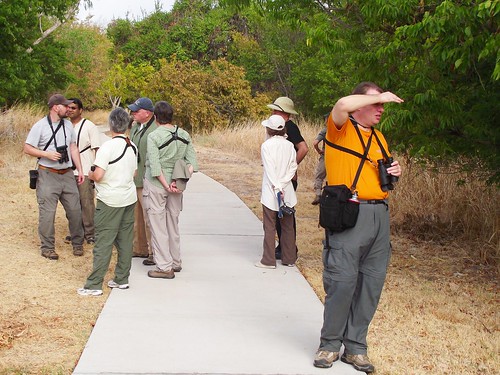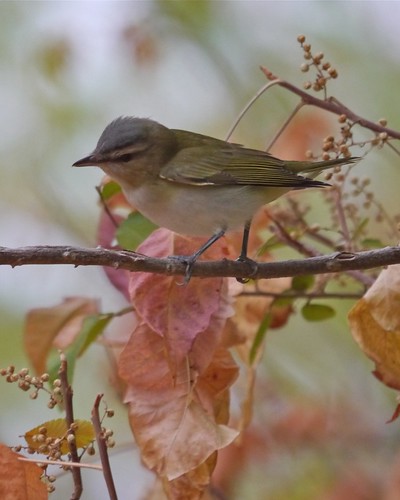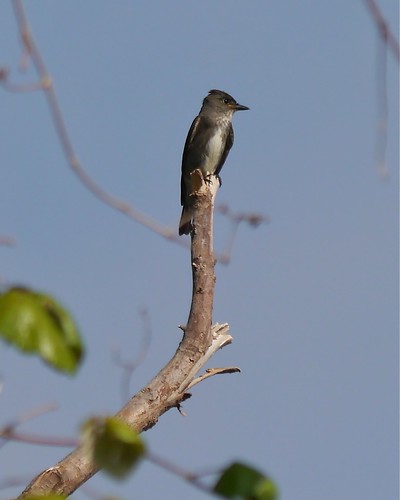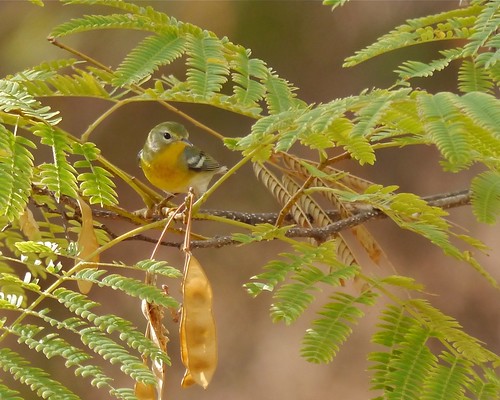 This morning, ten folks participated in this month's NASWC Bird walk. We started at 7:30 AM in the Lake Creek Trail parking lot (at the end of Braes Valley) and spent nearly three hours covering about half a mile of the trail. It was one of those special mornings that happens only a few times per year during spring or fall migration. Birds were everywhere! We spent over an hour in one spot just watching a group of willow trees between the parking lot and the creek. Blue-gray Gnatcatchers were the most numerous bird, and you could hear their raspy calls almost constantly. They were followed by Yellow Warblers, Wilson's Warblers, and Black-and-white Warblers. We almost got tired of seeing these four species!
This morning, ten folks participated in this month's NASWC Bird walk. We started at 7:30 AM in the Lake Creek Trail parking lot (at the end of Braes Valley) and spent nearly three hours covering about half a mile of the trail. It was one of those special mornings that happens only a few times per year during spring or fall migration. Birds were everywhere! We spent over an hour in one spot just watching a group of willow trees between the parking lot and the creek. Blue-gray Gnatcatchers were the most numerous bird, and you could hear their raspy calls almost constantly. They were followed by Yellow Warblers, Wilson's Warblers, and Black-and-white Warblers. We almost got tired of seeing these four species!These willow trees are a hot-spot for migrating songbirds, so I knew if we stayed there for awhile we'd likely see more. We did...
A Northern Parula made a brief appearance, and most of us got great looks at a male Mourning Warbler and a Yellow-breasted Chat. A waterthrush showed up that we decided was a Louisiana Waterthrush instead of a Northern, based on its broad white eye-stripe and unstreaked throat. A Red-eyed Vireo appeared and flew just a feet over our heads. It foraged very close for a bit and I was able to get this photo.
There were several flycatchers around, including a singing Eastern Wood-Pewee and a few empids, one of which I identified as a Least Flycatcher. We encountered at least three Olive-sided Flycatchers, more than I've ever seen on this trail before. I photographed this one, showing its vest-like body pattern and relatively short tail.
Further down the trail we found several Dickcissels and more gnatcatchers, Yellow Warblers, and Wilson's Warblers. At the footbridge we got good looks at a few Clay-colored Sparrows, and brief looks at two Baltimore Orioles. Also a Cooper's Hawk soared almost right over us. On our way back we found a few Blue Grosbeaks, including one mature male. And right by our original spot by the willow trees, we were treated to a long close look at a beautiful first-year female Northern Parula. I was able to get this photo of it.
What a morning! Like I mentioned at the beginning, mornings like this only happen a few times per year. Local weather patterns that can seem too subtle to make a difference actually seem to affect migrating birds' decisions to stop or continue their journey. And sometimes this leads to large numbers moving through at the same time. I'm glad I could share this migration event with the folks on my neighborhood bird walk! Here is the complete list of bird species we recorded.




No comments:
Post a Comment